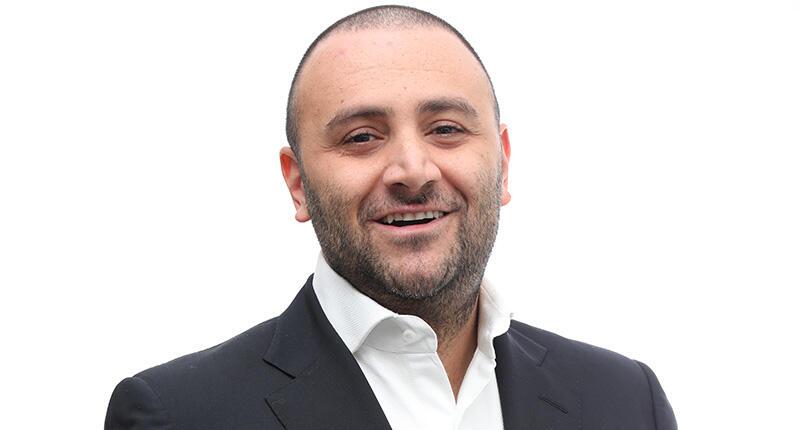Squirrel Spotting: A View From a ‘Between-Jobs Guy’
Peter Smith reflects on the connections he’s made during his time off and explains why change is so hard for everyone.

There is the odd juxtaposition of not wanting to drift too far from the ship, lest I find myself unable to get back on board, while at the same time fearing a quick re-boarding might not be the best idea, as I later could realize the ship’s sailing somewhere I don’t want to go.
The incoming calls and conversations to date have been, and I suspect will continue to be, interesting.
There have been calls from people at small and large companies. There are newer operators, and older, more established businesses. There have been retailers and vendors/suppliers. And a partridge in a pear tree … OK, wrong season.
There is, I confess, a real thrill in having the luxury of engaging conversations with company principals about their businesses, and where they want to take them. That exciting stew of frustration, passion, optimism, and history makes for wonderful theater and genuine human connection.
The biggest challenge for me, thus far, has been maintaining a level of sincere interest in learning about the business, the personnel, the company aspirations, etc., if I concluded quickly that joining a given company is just not right for me.
In those situations, I try to be respectful and, where possible, point the interested parties in a direction that might be a better fit for them.
Having a large industry Rolodex (yes, a digital one) has facilitated many solid connections for industry colleagues and companies through the years and I have always enjoyed making those introductions.
One of the more interesting aspects of this between-jobs period has been the number of companies that’ve reached out to enquire about using me in a consulting capacity.
The premise being, one assumes, that if they can’t make a significant hire, they can at least tap into my accumulated experience and know-how to gain an objective assessment of their business.
That has been a great deal of fun, as it allows me to bring my experience and perspective to interested companies without either one of us having to buy the cow, so to speak.
There have also been, naturally enough, a few head-scratchers.
There was the company that wanted to reconstitute their sales team but ended up doing nothing.
The business that was sick and tired of taking two steps forward, followed by two steps back, but decided ultimately to continue as they were because … well, because of Russia.
The company that wanted to buy another organization as an acquisition play but ultimately dropped the idea because of costs that would be no more than rounding errors in any eventual transaction.
In “The Catalyst, How To Change Anyone’s Mind,” Jonah Berger wrote, “Change is costly and requires effort, so as long as things are good enough, the impetus to switch is muted. Research suggests that the potential gains of doing something have to be 2.6 times larger than the potential losses to get people to take action.”
Psychology has a term for believing you want to do something, and then not doing it. It is called the status quo bias.
It’s why we stay with the same insurance company when we would be better off making a change.
It’s why we continue to visit the same barbershop, even as those haircuts become less satisfactory.
It’s why we continue to give our business to the same old dry cleaner while lamenting the quality of their work.
Companies, even those that self-servingly sprinkle their communications with buzzwords such as “innovative,” and “disruptive,” are more often risk-averse. In fact, a Boston Consulting Group survey from 2015 identified risk-averse cultures as being the major impediment to innovation.
Neuroscientist and author Robert Cooper wrote in “The Other 90%” that, “The amygdala’s instincts, which have evolved over thousands of years, tend to spill into every aspect of life and promote a perpetual reluctance to embrace anything that involves risk, change or growth.
“Your amygdala wants you to be what you have been and stay just the way you are.”
With all due respect to Mr. Cooper, I’ll end it there. I’ve got to wrap this up for now, as I need to find a ship that just might be going my way.
The Latest

The luxury goods company said founder Ippolita Rostagno will remain at the brand’s helm.

Laura Burdese, who joined the Italian luxury brand in 2022, will take on the role in July.

The National Jeweler editors revisit the most noteworthy industry happenings and design trends from 2025.

How Jewelers of America’s 20 Under 40 are leading to ensure a brighter future for the jewelry industry.

Need a gift for the cat lover who has everything? Look no further than our latest Piece of the Week.


It purchased the “Grosse Pièce,” an ultra-complicated Audemars Piguet pocket watch from the ‘20s, for a record-breaking price at Sotheby’s.

The lab-grown diamond grower now offers custom engagement and fashion jewelry through its Kira Custom Lab Jewelry service.

Roseco’s 704-page catalog showcases new lab-grown diamonds, findings, tools & more—available in print or interactive digital editions.

Chandler got his start at Michelson Jewelers and has served as DCA president and CEO since 2001. He will retire at the end of the month.

The boutique is slated to open this week inside Terminal 8, offering pre-owned Rolex watches and more to international travelers.

Sponsored by Digital Monitoring Products

The special-edition egg pendant ingested in a New Zealand jewelry store was recovered after a six-day wait.

Associate Editor Natalie Francisco plays favorites with Piece of the Week, selecting a standout piece of jewelry from each month of 2025.

The “Love and Desire” campaign is inspired by the magic that follows when one’s heart leads the way, said the brand.

Two awardees will receive free tuition for an educational course at the Swiss lab, with flights and lodging included.

Berta de Pablos-Barbier will replace Alexander Lacik at the start of January, two months earlier than expected.

Sotheby’s held its first two jewelry sales at the Breuer building last week, and they totaled nearly $44 million.

Winners will receive free registration and lodging for its fourth annual event in Detroit.

The honorees include a notable jewelry brand, an industry veteran, and an independent retailer.

Carlos Jose Hernandez and Joshua Zuazo were sentenced to life without the possibility of parole in the 2024 murder of Hussein “Sam” Murray.

Yood will serve alongside Eduard Stefanescu, the sustainability manager for C.Hafner, a precious metals refiner in Germany.

The New Orleans jeweler is also hosting pop-up jewelry boutiques in New York City and Dallas.

Set in a Tiffany & Co. necklace, it sold for $4.2 million, the highest price and price per carat paid for a Paraíba tourmaline at auction.

The jeweler’s “Deep Freeze” display showcases its iconic jewelry designs frozen in a vintage icebox.

Take luxury gifting to new heights this holiday season with the jeweler’s showstopping 12-carat sphene ring.

This year's theme is “Unveiling the Depths of the Ocean.”

In its annual report, Pinterest noted an increase in searches for brooches, heirloom jewelry, and ‘80s luxury.




























